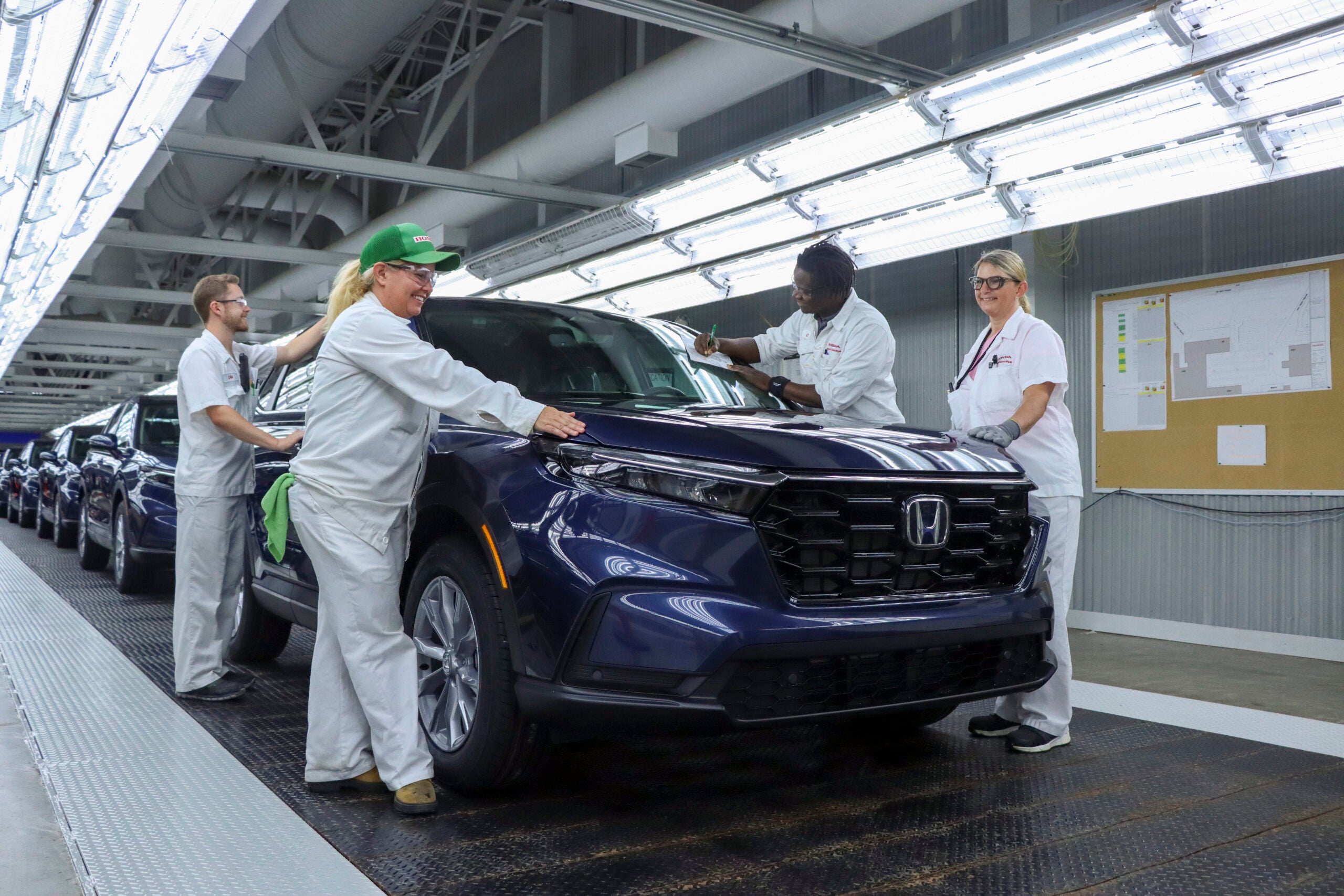
Honda of Canada Mfg (HCM) has begun mass production of the redesigned, sixth generation 2023 CR-V.
HCM is the global lead plant for the CR-V which has been built in Canada since 2012. Production is also about to start at the US Indiana Auto Plant (IAP) and East Liberty Auto Plant (ELP) in Ohio.
Production of the hybrid version will start in Canada in October, followed by IAP and ELP.
Honda said it would increase production of the hybrid to half of CR-V sales, a key step in its overall electrification strategy.
Clement D’Souza, SVP of HCM, said: “Next up is the hybrid which is more important than ever to the CR-V lineup and a model we are very excited to deliver to our Canadian customers for the first time.”
The 2023 CR-V has two 1.5-litre turbocharged trim levels, EX and EX-L while Sport and Sport Touring trims will be hybrid-electric.
HCM Line 1 a year ago served as the lead plant in North America for the production launch of the redesigned 2022 Civic.
HCM has employed a “perfect body” fixture for the first time to more quickly achieve optimal fit and finish using a data driven process. An approach first employed at ELP for the 2017 CR-V, this full size mock-up of the body is milled from a single piece of steel with the highest dimensional accuracy to help mature the fit of interior parts and components, as well as the tailgate. Time is critical during the trial production stage and, in the past, the team would need to tear apart a trial unit to diagnose fit and finish issues. The perfect fixture enables the team to quickly apply countermeasures on the main assembly line.
The latest CR-V has the largest hood (bonnet) in plant history. Production engineers worked with the developers to increase rigidity by increasing the thickness of the steel sheet and adjusting the frame design so it could be handled through the stamping and weld departments.
The automaker also “dramatically” increased use of high performance structural adhesive for increased body rigidity and is newly applying acoustic spray foam to the body structure for enhanced cabin quietness.
While the Indiana and East Liberty plants have applied these materials to other new Honda vehicles, including Civic, Line 2 at HCM is employing these processes for the first time and needed to add new equipment and worker training.
With the R&D team in Japan, initial prototype build for CR-V would typically take place there but, with development taking place during the early stages of the COVID-19 pandemic, travel restrictions were in place.
Since North American production engineers could not travel to Japan, prototype build was moved to HCM where the use of digital tools was applied to collaborate between sites. This led to design and process changes that now make it easier for Canadian and US workers to build CR-V to a high level of quality.



